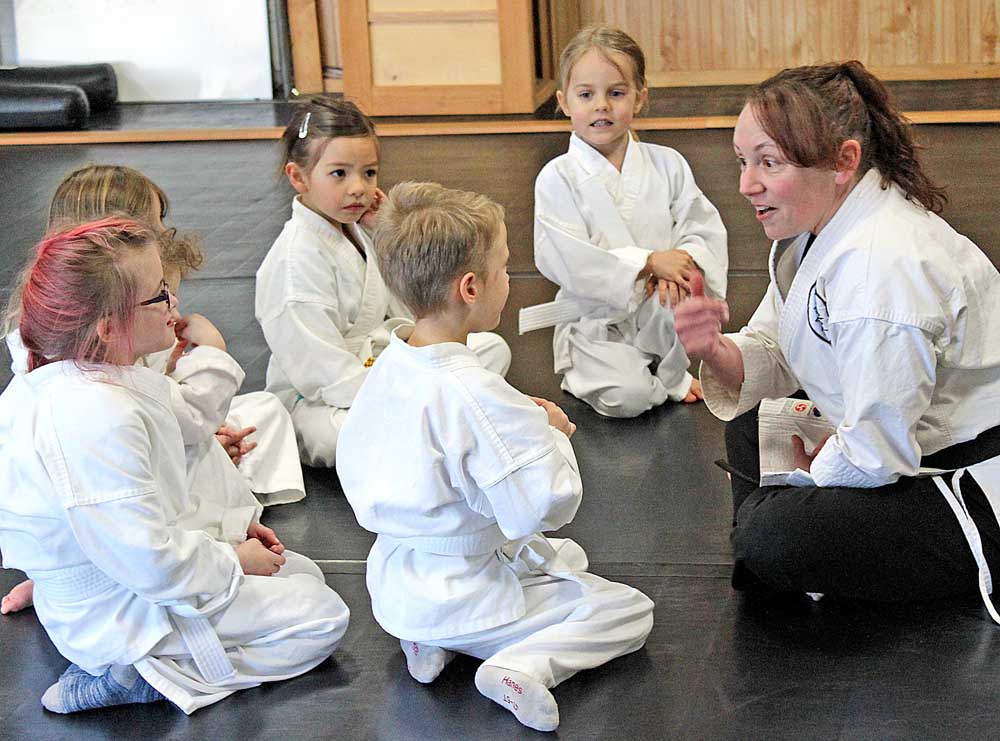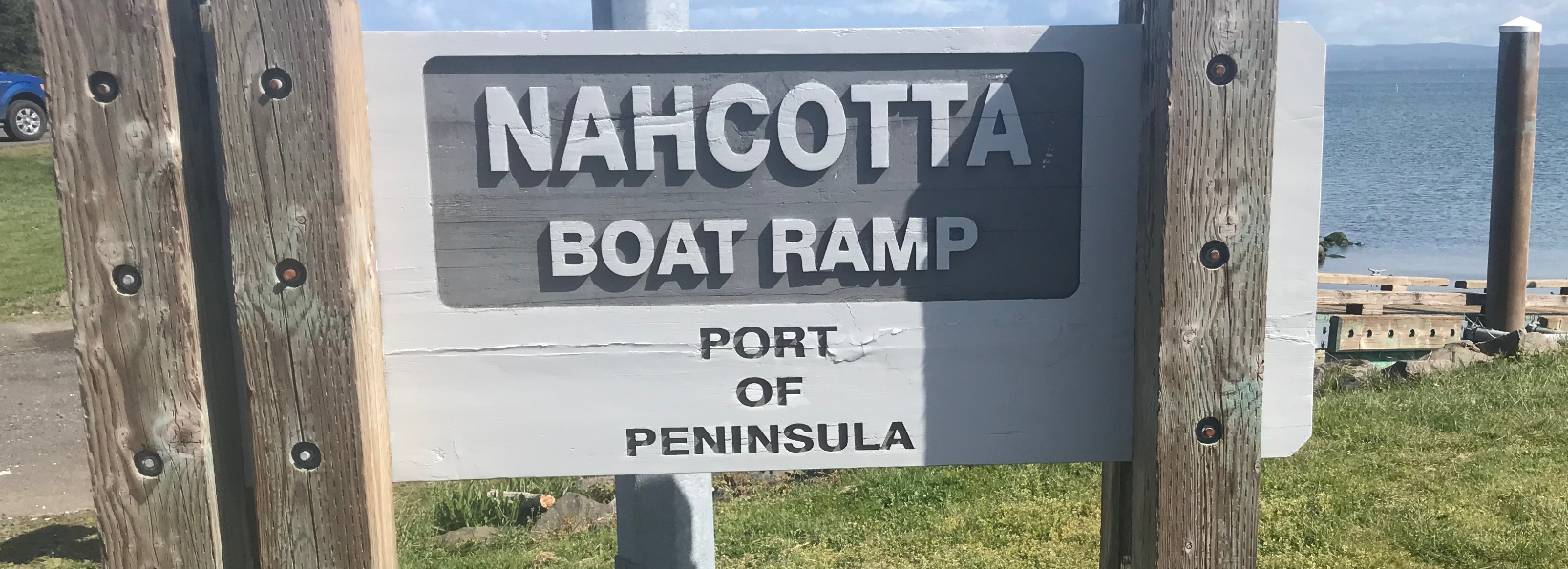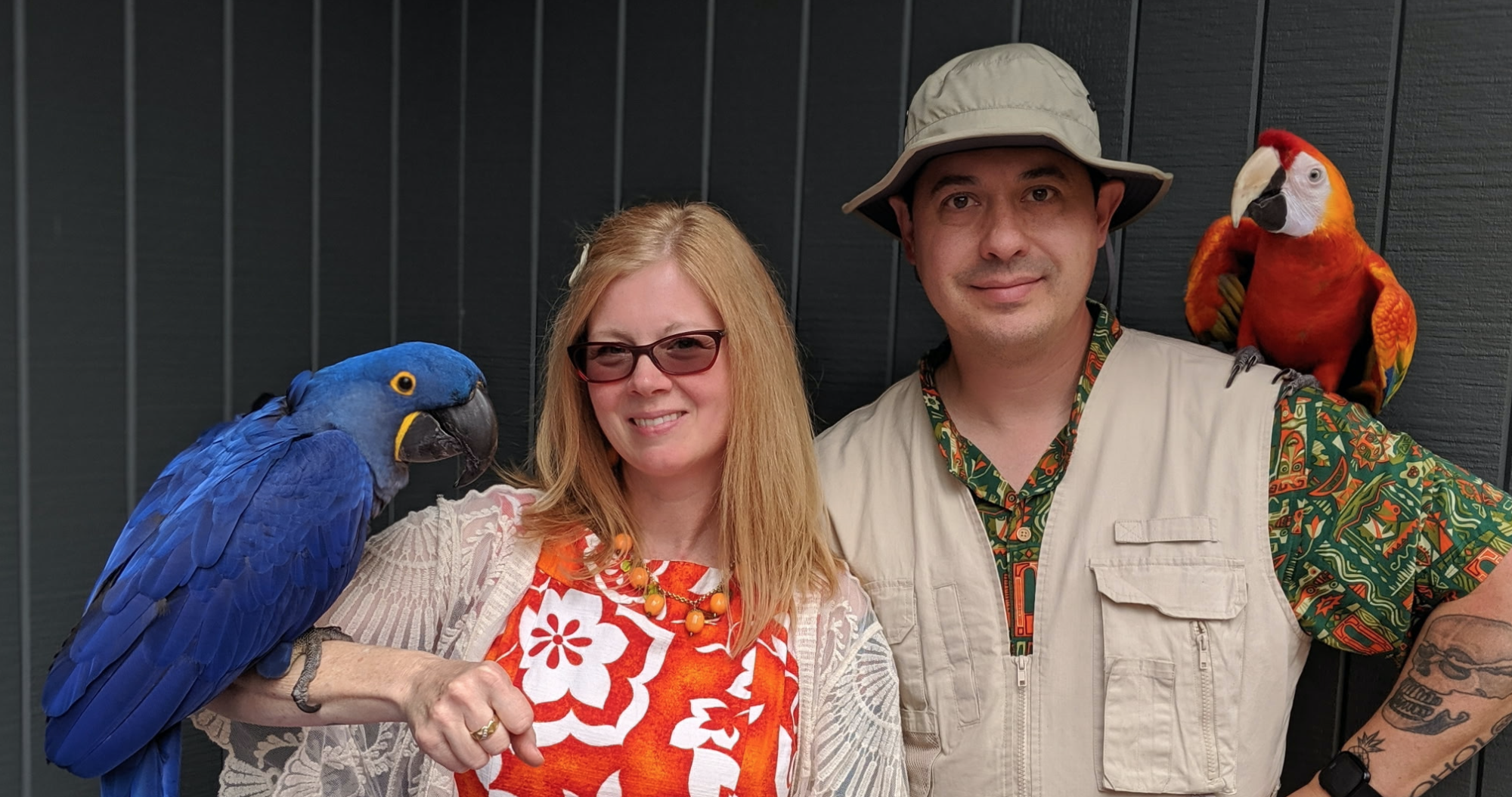Martial arts empower Peninsula adherents
Published 8:47 am Friday, March 2, 2018

- Padme Grace, right, teaches lessons in safety to young karate kids including Mora Cunningham, Rhea Baumann, Greighson Cunningham and Damien Cox.
LONG BEACH — Padme Grace was a shy young mom in Seattle wanting to enroll her 4-year-old son, Robert, in an activity program knowing he didn’t show traits suitable for team sports.
She smiles as she recounts driving past a martial arts studio, then stopping and looking through the window at what was happening inside. “I was intrigued by the whole process,” she said.
Entering that dojo changed her life path.
“I got him involved and I was the mom who stayed and watched the classes.”
Grace especially appreciated hearing the “mat chats” the instructors held with their young students — teaching them life lessons and survival skills, as well as physical martial arts. “It’s not just kicking and punching.”
The studio encouraged women’s self-defense classes and it wasn’t long before Grace was assisting and then instructing.
“From being very shy, bit by bit I started to find my confidence, inner strength and voice,” said Grace. “I like seeing that happen in other people.”
Fast forward 20 years and Grace teaches four styles in Long Beach. Her Pacific Integrated Martial Arts has existed on the Peninsula nearly seven years and offers karate, Combat Hapkido, Brazilian Jiu-Jitsu and kickboxing. She holds three black belts, third degree in Shudokan Karate-do, fourth degree in Combat Hapkido and fifth degree in Shinka-Ryu Karate-do.
The variety is intentional. “A lot of styles say, ‘Ours is the best and we don’t want you learning any other,’ but I find they are all linked in with each other, and that’s why I have different styles here,” she said.
Respect is a core value in all disciplines. As every student approaches the training area, they pause, adopt a controlled stiffness, and bow. The youngest students might arrive squirrelly, but within moments Grace’s calming voice and no-nonsense discipline has them focused.
One early lesson, familiar in martial arts movies from Bruce Lee to “Karate Kid,” has students first say to a partner they don’t want to fight, before they parry offensive moves and overcome their attacker. Her classes for younger kids continually stress safety, like appropriate reactions to “stranger-danger.”
Sessions end with a group chant that reflects effort over achievement for every age level. Voices ring out: “I’m on a quest to be my best!”
Displayed round the dojo is the organization’s logo which features the ying and yang symbols common in many Eastern disciplines, though one half is a distinctive ocean wave. A wall display of colored belts offers inspiration for students to progress. It is alongside weapons which hearken to the days when Japanese farmers honed defensive skills using hand-held farm implements.
Flags and bulletin boards display inspirational phrases. One reads, “You are stronger then you seem, braver than you believe, and smarter than you think you are.” Another stresses confidence through posture. “Bully free starts with me.”
On a recent afternoon, Jamie Henington watched from the waiting area as her 4-year-old grandchild, Mya Henington, learned karate techniques. “I like it because it brings them self confidence and the ability to protect themselves,” the Long Beach grandmother said. “And it’s a good alternative for kids who don’t like football or basketball.”
Later, two black belts demonstrated formal karate movements with poise as Grace led a group of older students up the mat and back keeping their stances tight and controlled. When split into pairs, they worked with a bow staff, a soft pole-like weapon, alternately disarming each other.
One, Lucas Hart, 14, began karate when he was seven, and in recent years has embraced combat Hapkido and Brazilian Jiu-Jitsu. “It’s good physical education — it’s a real challenge,” he said. “It takes a lot of dedication.”
Zoey Zuern, 12, agreed, describing Grace as an inspirational leader. “She is amazing. I have learned so much and I love this class. I have learned self confidence and it has made me a better person.”
Zuern has been studying karate since she was six, and has an unexpected answer when asked about reaching black-belt status. “That is the beginning of your training,” she emphasized. “You learn so much after that.”
Jen Reinmuth-Birch, was the lone adult in the class. Her husband has martial arts training and her interest began when she drove twin sons Jack and Mike Haldeman, now 15, to their sessions.
“I watched three classes and wanted to get out there,” she said, nodding towards the practice floor. Like many adherents, she can sum up the rewards fluently. “It’s the knowledge that I have a voice and can fight back,” she said. “And it’s a fantastic bonding experience with the boys.”
She has earned her red belt, one of the highest ranks. Son Mike Haldeman has autism, and she said the training has considerably enhanced his socialization and motor skills. “We have seen kids come in with no confidence and just grow,” she said.
Career preparation
Another instructor, David Allsup, of Ocean Park, is a firefighter-paramedic with Pacific County Fire District 1.
He said martial arts training prepared him for his 26-year professional career.
“I was always a small kid,” he said. The turning point came when he was nine. “At one point, my parents saw I was having trouble at school with bullies and said, ‘We want you to be able to defend yourself.’”
Karate was the available option. “I took to it pretty naturally and excelled pretty quickly,” he said. “I like the physical and mental discipline that bleeds into day-to-day life. I was shy and it gave me an opportunity to find some confidence within myself and blossom.”
By 12, he was teaching adult classes. In the years that have followed, he has broadened his interests into Brazilian jiu-jitsu. He especially likes its close contact, often fighting on the ground. “It teaches you to be comfortable in uncomfortable situations.” he said, noting that people with physical limitations including blindness can adopt its techniques. “There’s a way for every single person to practice this martial art.”
Although he travels out of the area for his own advanced training, he strongly recommends the classes in Long Beach.
“It’s a very good way for people to connect with each other, very family oriented, and the environment is very safe,” he said. “This is a safe place — we don’t have a lot of ‘machismo.’ It’s not people trying to rip each other’s heads off.”
Now 46, Allsup trains six days a week.
“It’s addicting,” he said. “Once you get it in your blood, it’s part of your life.”





